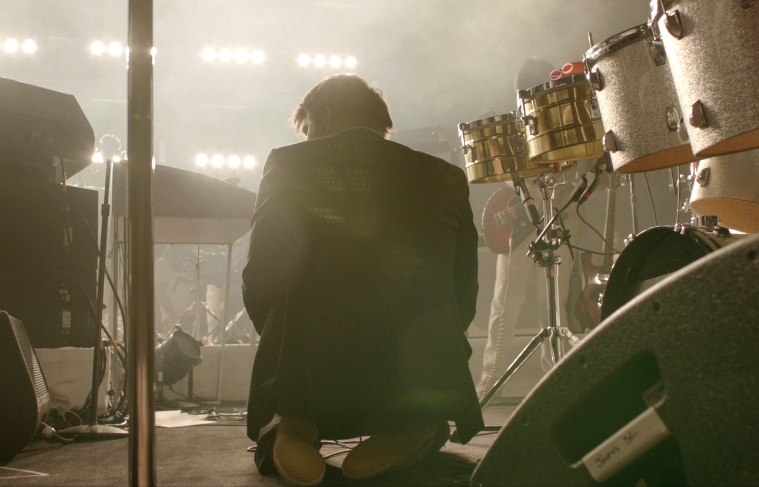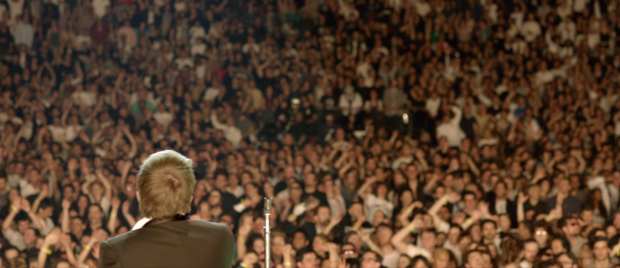After his music being featured in Antonio Campos‘ Simon Killer, and appearing with Tim Heidecker in The Comedy, LCD Soundsystem frontman James Murphy is back in the spotlight at Sundance. His biggest involvement in the three is Shut Up and Play the Hits, a concert documentary that follows the musician for a 48-hour period surrounding the band’s last concert.
Directed by Dylan Southern and Will Lovelace, the bulk of the film features the band’s time at Madison Square Garden on April 2nd, 2011. Serving as a voice-over throughout some of the documentary is a one-on-one interview conducted a week before by writer Chuck Klosterman. Gorgeously shot and including many of their major hits (don’t worry, a release of the full four-hour concert is on its way), Shut Up and Play the Hits is a must-see for fans of the band.
For those that have never listened to this electronica/dance/punk/rock band howeever, I hesitate to flat-out recommend. This is no complaint, but there is no backstory of how they came out about, no profiles on each of the members and certainly no quick montages of their music. These are (mostly) full performances, including an euphoric rendition of North American Scum, featuring Win & Will Butler, Régine Chassagne and other members of Arcade Fire howling out with glee.
Klosterman’s interview layered throughout much of the film is far-reaching and broad, leaving much to be desired for this precious final moments of exchange. But is is the visual and audio experience that skillfully recreate this unforgettable night. Southern and Lovelace employ a number of dazzling camera angles, one in particular of a low viewpoint peering up as Murphy cries out the his anthems and colors swirl behind him.
At one moment James Murphy stands by himself in a room, looking at the wealth of instruments he’ll never play again with his bandmembers, now best friends. He weeps. In a polarizing shot of bliss, he continually belts out, “If I could see all my friends tonight,” as a sea of people – many in tears – hang on to every word and motion in his farewell performance.
It is these conflicting states of being that Shut Up and Play the Hits captures with finesse. This is a portrait of a man that can have it all, yet gives it all away. Will his next project exceed his last? With a final goodbye as pristine as this, that is the last question on my mind.


